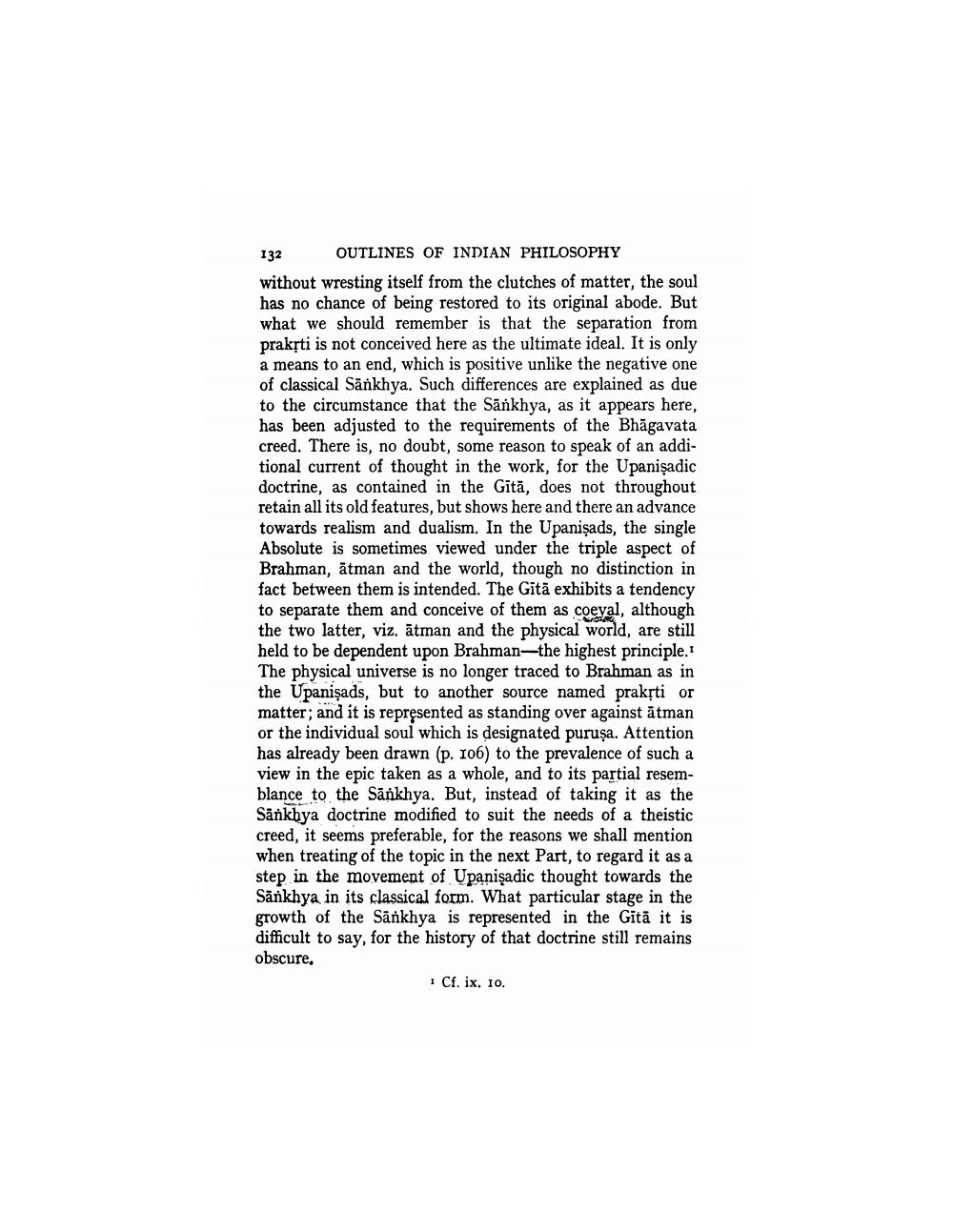________________
132 OUTLINES OF INDIAN PHILOSOPHY without wresting itself from the clutches of matter, the soul has no chance of being restored to its original abode. But what we should remember is that the separation from praksti is not conceived here as the ultimate ideal. It is only a means to an end, which is positive unlike the negative one of classical Sankhya. Such differences are explained as due to the circumstance that the Sankhya, as it appears here, has been adjusted to the requirements of the Bhagavata creed. There is no doubt, some reason to speak of an additional current of thought in the work, for the Upanisadic doctrine, as contained in the Gītā, does not throughout retain all its old features, but shows here and there an advance towards realism and dualism. In the Upanişads, the single Absolute is sometimes viewed under the triple aspect of Brahman, ätman and the world, though no distinction in fact between them is intended. The Gită exhibits a tendency to separate them and conceive of them as coeyal, although the two latter, viz. ātman and the physical world, are still held to be dependent upon Brahman-the highest principle. The physical universe is no longer traced to Brahman as in the Upanişads, but to another source named praksti or matter; and it is represented as standing over against ātman or the individual soul which is designated puruşa. Attention has already been drawn (p. 106) to the prevalence of such a view in the epic taken as a whole, and to its partial resemblance to the Sankhya. But, instead of taking it as the Sankhya doctrine modified to suit the needs of a theistic creed, it seems preferable, for the reasons we shall mention when treating of the topic in the next Part, to regard it as a step in the movement of Upanişadic thought towards the Sankhya in its classical form. What particular stage in the growth of the Sankhya is represented in the Gitā it is difficult to say, for the history of that doctrine still remains obscure.
1 Cf. ix, 10.




